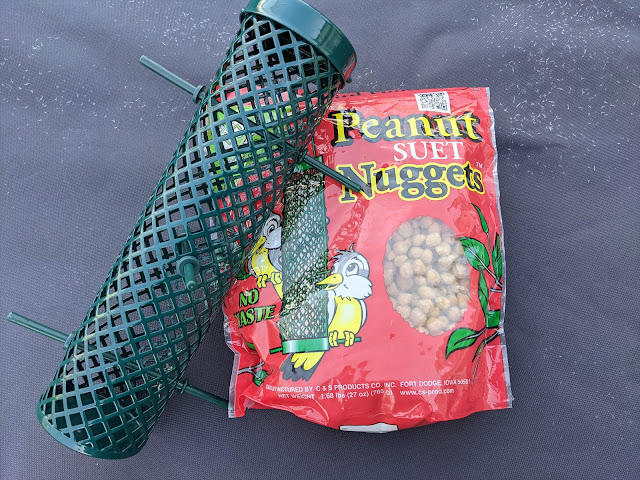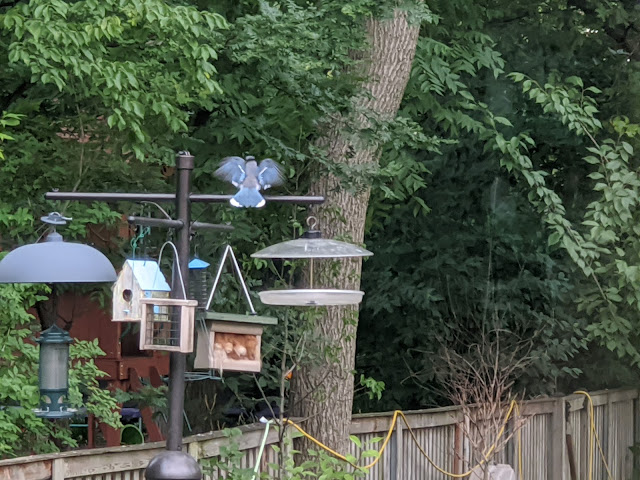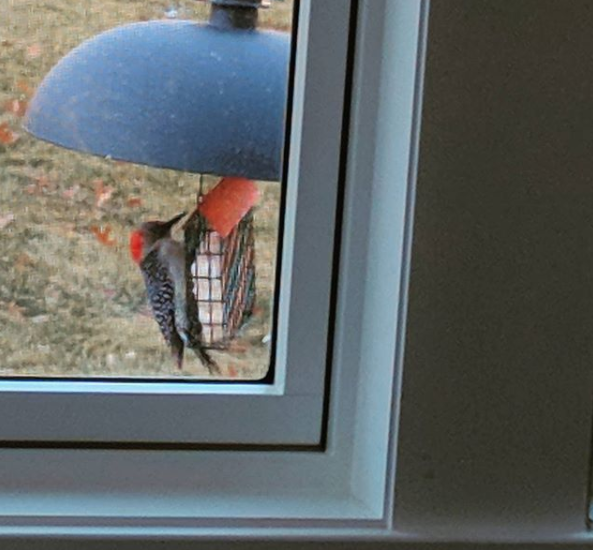New Fly-Thru Bird Feeder - January 2023

In my recently-posted recap/scorecard of what I wanted to do in the yard this past year, I marked the item about getting back into wildlife feeding as a 'miss'. The reality is that I really ONLY feed the birds and critters during the cold months. That's something like November to March...usually. A few years back, the kids and I applied to be a Certified Wildlife Habitat and part of that process is to ensure that your yard is providing - among other things - food. During COVID, I was home everyday. And so were kids. That meant that we had the opportunity to feed the birds and squirrels every morning. I fed the birds and the kids put cracked corn and various seeds on the perimeter of the fence for the critters to fuel up. I was able to feed the birds everyday because we had this really lovely clear, plastic fly-thru feeder that I bought back in 2018 . That was a real breakthrough moment for me with birds. Up until then, I had only used feeders that were closed


















